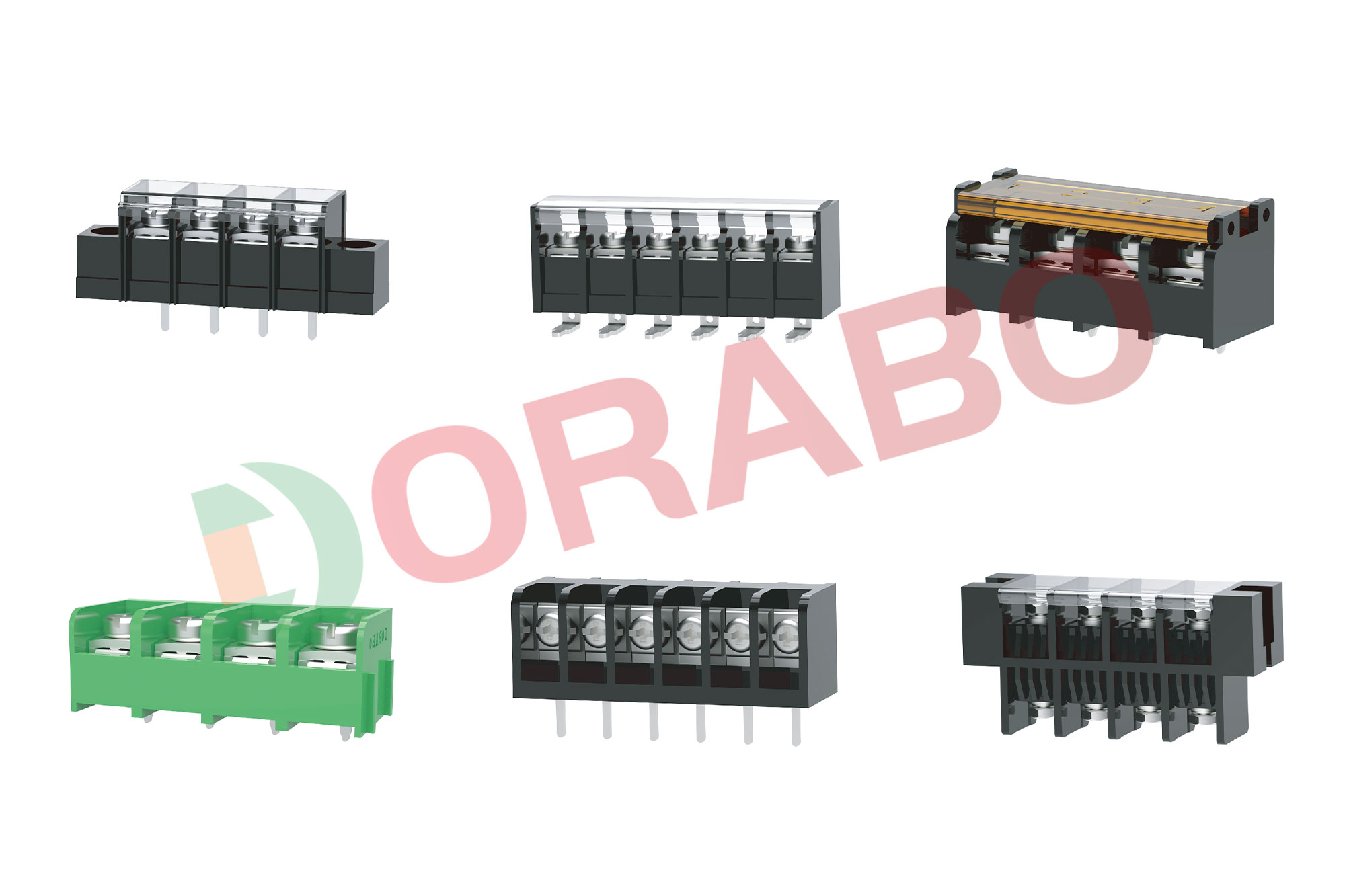Electrical Terminal Blocks is a modular connector engineered for a reliable connection that secures two or more wires together and manages complex electrical circuits. They are also used for connecting wires to ground or earth connections. Outer bodies of Terminal Blocks are ideally made up of melamine or polyamide material.
Polyamide is a thermoplastic material with excellent electrical and mechanical characteristics. This material is known for high insulation, tracking resistance, and a high flammability score.
Melamine is a thermoset material with dielectric properties. It has a high level of resistance to hot, cold, and damp environments; retaining its electrical and mechanical stability. Also, it has excellent insulation properties and high resistance to flashover.
Ceramic is a sturdy material that can be used in extremely high temperatures. Ceramic blocks are preferred in industrial plants with excessive dust deposits and abnormally eroding environments.
Terminal Blocks majorly use a copper alloy to ensure very low contact resistance. The wires are securely connected to current bars with the help of clamps; these clamps can be screw clamps, spring clamps, nut & bolt, or studs. There are different types of lugs or ferrules available for connecting the wires to Terminal Blocks e.g., pin-type, tubular, hook type, fork-type, and ring type lugs depending on the area of application, current & voltage ratings. There are a variety of Terminal Blocks used in the electrical industry as per the application and circuit requirements like Standard Feedthrough Terminals, Multiple connection Terminals, Double Level & Triple Level Terminal Blocks, Micro Terminal Blocks, and Sensor Terminal Blocks, CT connection Terminals, Fuse Terminals, Bus bar Terminals, and most important Grounding / Earth Terminal Blocks.
Screw Clamp Connection is the most popular method of wire termination. It offers distinct advantages over the other wire termination methods such as (i) Suitable for all types of wires, (ii) Wires can be connected without any special preparations (iii) Simple connection and disconnection of wires with the aid of an ordinary screwdriver.
The steel clamping screw produces a high contact force while the steel clamping yoke transmits this force by pressing the conductor against the current bar, which is made up of electrolytic copper. When the clamping screw is tightened, the clamping yoke gets pulled upwards, pressing the wire against the current bar. A flat clamping area ensures the safe grip of wires of smaller cross-sections.
Spring Clamp connections:
The screw-less Spring Clamp connection is as versatile as the Screw Clamp connection. In this type of connection, the wire is held against the electrolytic copper current bar directly by a pre-stressed spring clamp. The spring is operated by using a screwdriver to provide access to the wire through the opening in the spring clamp. The inserted wire gets clamped onto the current bar on the removal of the screwdriver. The high-quality stainless steel clamp ensures a good connection of the wire with minimal contact resistance. The features of Spring Clamp connection are (i) Easy operation and time-saving connection method, (ii) Vibration-proof connections (iii) Fail-proof safe and maintenance-free connections.
Cable Lug and Bus bar Connection:
This method of wire termination is preferred for connections that are subject to very severe vibrations. The wire is crimped to ring or fork-type lug and is screwed onto the flat current bar in the Terminal Block. This type of connection is also preferred for wires of larger cross-section; the conductor is fitted with a ring lug and bolted onto a flat current bar.
Tab Connection Method:
Tab connections are preferred in applications where the connected wire needs to be frequently connected and disconnected. Tab sleeves with the crimped wires are pushed onto the Terminal Block. These are simple connections and allow connection and disconnection of wires in a circuit with ease.





















 Contact us
Contact us Language
Language


